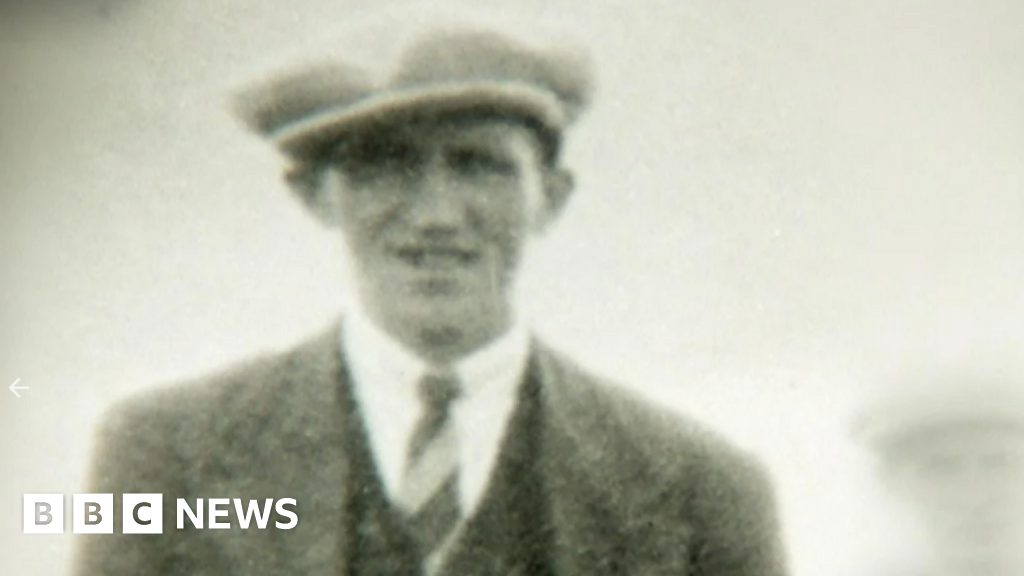World
Harry Gleeson: A pardoned man finally laid to rest – BBC News

Image source, Gleeson Family
- Author, Rebekah Wilson
- Role, BBC News NI
A man wrongly convicted of murder 83 years ago has finally been brought home.
Henry ‘Harry’ Gleeson was executed for the murder of Moll McCarthy, who was shot dead in County Tipperary in November 1940.
His body was exhumed from the grounds of Mountjoy Prison in Dublin in January 2024 and returned to his family.
An innocent man’s life taken
A government review of the case was carried out following pressure from justice campaigners and Mr Gleeson’s family.
It found police and prosecutors withheld crucial evidence from the farm labourer’s trial.
Mr Gleeson was convicted and executed “as a result of a case based on unconvincing circumstantial evidence”, the review found.
For the family, it was “amazing”.
Harry’s grand-nephew, Kevin Gleeson, told BBC News NI that it was a long, emotional, but powerful day.
“The feeling of the day—the many people that worked on this to get Harry’s name exonerated—that day was brilliant.
“Harry was an innocent man; his life was taken,” he added.
The person who murdered Moll McCarthy has never been brought to justice.
Finding Harry
Image source, Gleeson Family
Kevin said having Harry’s name cleared was a huge achievement, but it wasn’t the final stage of his journey.
“We have a good, big family; there were people we did this for, and we knew it was time to get Harry home,” he said.
It took eight years and many meetings with the Republic of Ireland’s Department of Justice (DoJ) before the process of exhuming Harry’s body began.
“We had little documentation, but there was a registration book at Mountjoy Prison; Harry’s death record said where he was buried—the rear of an old hospital within the prison,” Kevin added.
He said the DoJ was “willing to leave no stone unturned”.
An area on the grounds of Mountjoy Prison was excavated in January to recover the remains of 29 prisoners executed between 1923 and 1954.
A huge amount of work went in to open the area of the prison, and there was a lot of anxiety over whether anything would be found.
“The real work was happening; we weren’t naive; the remains could have been someone else; it was only 1000 square metres, but you had gas, water, and electric services through the decades; we were worried,” said Kevin.
By March, about nine remains had been recovered, and the Gleeson family was told Harry could be one of them.
“The DNA process took some time, but we were ecstatic—it was a weird, surreal time.”
After the remains of Harry Gleeson were confirmed via DNA processing, the family were ready to give Harry his final journey home.
‘Harry is home’
Image source, Gleeson Family
Harry’s family set out on the journey to bring him to his hometown of Galbertstown in County Tipperary at the start of July.
“It was a very emotional day, to bring him out of the gates of Mountjoy Prison – 83 years ago he went into that prison and was dead within three months.
“They had a guard of honour, the silence was immense – prison guards and prisoners came out too – it was just amazing,” said Harry’s grand-nephew.
Harry Gleeson’s niece Kitty, at the age of 90, waited at Harry’s family home to welcome her uncle back.
“Bringing Harry back to Kitty – the silence and the tears was unbelievable. She lived through the hurt – she was so proud and delighted – he was home,” said Kevin.
Image source, Gleeson Family
Kevin added that people from far and wide across the island of Ireland came to Galberstown.
“The amount that travelled and paid their respects – it was a special moment. We had chats and music – Harry’s own fiddle was played all weekend.”
A funeral was held at Holycross Abbey on 7 July and he was buried at St Mary’s Cemetery, Holycross.
It all happened 83 years after he was executed by the Irish state.
“The burial was – well I just can’t describe it – hundreds of people walked him up – it was a sad but happy time – just to have him home,” Kevin added.
“To be able to visit his grave, after Harry was behind the walls of Mountjoy – it’s been a long journey – but this is closure, it’s closure to Harry’s story.”










